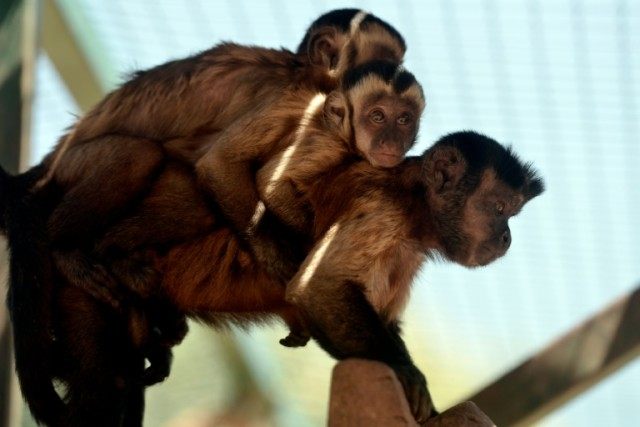Panama City (AFP) – Seven little monkey teeth 21 million years old found during work on the Panama Canal are ripping up scientific theories on simian migration.
The fossils, found by US and Latin American researchers who wrote up the discovery in this week’s edition of Nature, suggest that so-called New World monkeys — ones that made it across the Atlantic from Africa to South America — made it to North America 18 million years earlier than previously thought.
They are “the first evidence of a monkey on the North American continent before the isthmus of Panama connected it to South America 3.5 million years ago,” the Panama-based Smithsonian Tropical Research Institute (STRI) said in a statement.
Scientists once thought that 200 kilometers (140 miles) of sea that separated North and South America in the Miocene era was a barrier to all mammal migration, and that monkeys only moved from South America to North America when Panama rose from an island-dotted sea and linked the two.
“It had been believed that the monkeys were restricted to South America,” which millions of years ago “was a continental island with no evident connection to North America,” an STRI scientist, Aldo Rincon, told AFP.
But that theory has to be revised because of the teeth found by a team led by University of Florida paleontologist, Jonathan Bloch.
The team identified the teeth as belonging to a previously unknown species of monkey dubbed Panamacebus transitus, believed to be related to capuchin and squirrel monkeys found today in South and Central America.
“These monkey fossils from the canal show that somehow — and we aren’t really clear how — some monkeys made it to Panama,” Rincon said.
– Island hopping? –
The best guess is that the monkeys hitched rides on floating vegetation, hopping from island to island, or that they were swept to sea by storms, he said.
“The only way of getting across that can be rejected out of hand is that they walked,” Rincon said.
The scientists had long been wanting to dig for fossils in Panama’s deep jungle, but it was work started in 2007 to expand the country’s canal that offered an unprecedented opportunity.
The $5.6 billion expansion project saw engineers dynamite the canal’s banks. That “unlocked a treasure trove for us, containing this new monkey species and many other fossils,” said Carlos Jaramillo, an STRI scientist who was on the team.
“It was an incredible opportunity, a once-in-a-century opportunity to look at rocks in the tropics,” Bloch said, according to Nature.

COMMENTS
Please let us know if you're having issues with commenting.